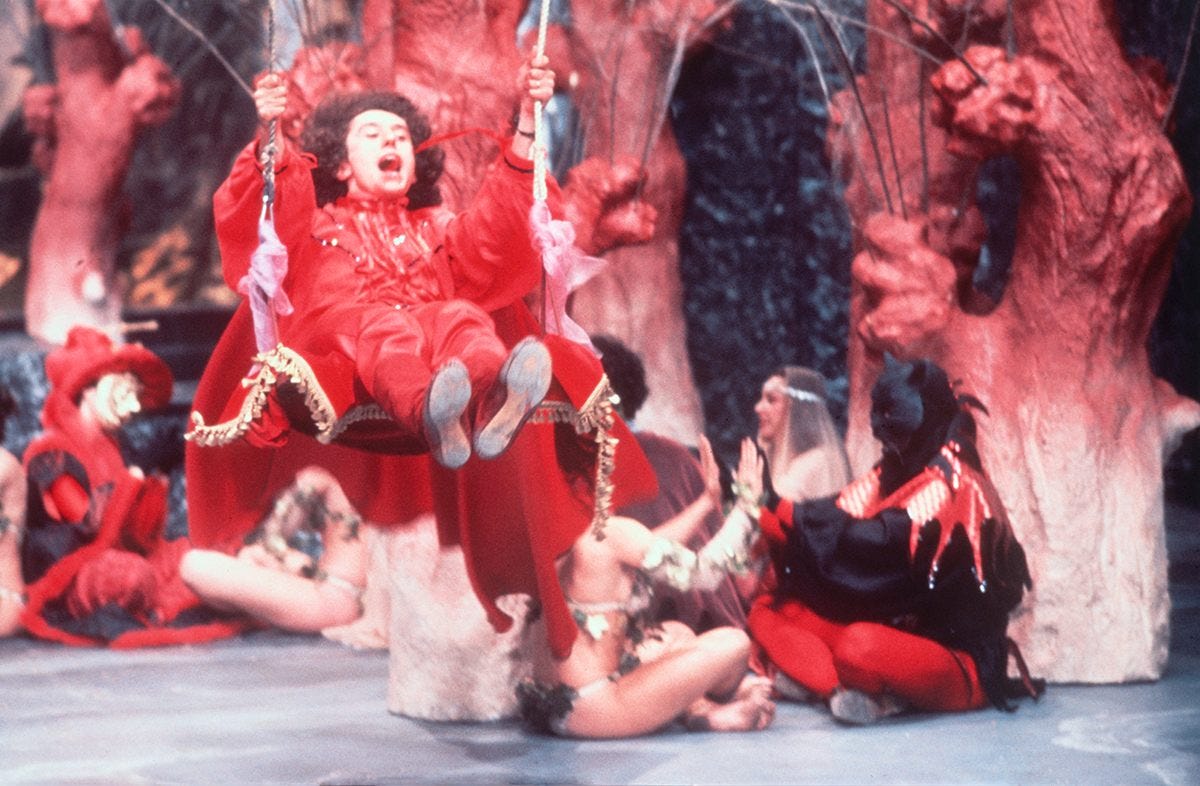Another Type of Dance
How Medieval and Renaissance-Inspired Rhythm Permeated Italian Music
If you tuned into Italian Disco Stories’ favorite show Stryx (which we discussed here, here, and here) you’d notice that, between high-femme, sensual disco acts and languid, slower numbers, there was a red-clad, violin-wielding creature known as “Il Folletto”, the Imp.You’d see him on a swing or serenaded by folk instruments known as launeddas, when he’d start singing songs that seemed to have originated a long time ago, which fit with the overall theme of the show.
That was Angelo Branduardi, Italy’s own menestrello, who invited people to another kind of dance. “Ballo in Fa Diesis Minore,” contained in the album La Pulce d’Acqua for instance, has death knock on a door, and only a dance can distract her and temporarily stop her, as she has to put down her glaive to join others.
Between the 1970s and 1980s, The 4/4 beat (or 2/4 for the Schlager-inspired tracks) was not the only dancing rhythm in Italy. While many producers and performers looked to the glitzy surfaces of discothèques and dancefloors, others channeled another type of dance, the one we associate with taverns, jousts, and fairytales set in a far away land.
Angelo Branduardi, a classically trained violinist and singer songwriter, became famous in Italy and continental Europe for including Renaissance and Early Baroque influences in his songs. Consider his 1976 song and album Alla Fiera dell’Est, also known as Highdown Fair. The title track is an adaptation of the Passover song Chad Gadya, the track “Il vecchio e la farfalla” is based on the travels of Marco Polo, “la serie dei numeri” references the breton son “Ar Rannoù,” and the melody of “Sotto il tiglio” (under the linden tree) is, indeed, a homage to the lied of the same name—Unter den Linden—by 12th-13th-century German poet Walther von der Vogelweide.
His 1979 album Cogli la prima mela (pluck the first apple) has its title track adapted from a medieval tune from Hungary, known as U naseho Barty. The melody of the song “Donna ti voglio cantare” elaborates the French tourdion Quand je bois du vin clairet, a fast, frantic dance for couples. The song “La Raccolta” has the lyrics adapted from Sappho’s poetry, while the melody comes from a Romanian folk ballad titled “M-am suit în dealul Clujului.” “La Strega” is inspired by the story of Eloise and Abelard, and, allegedly, it should have been titled “Eloisa”




